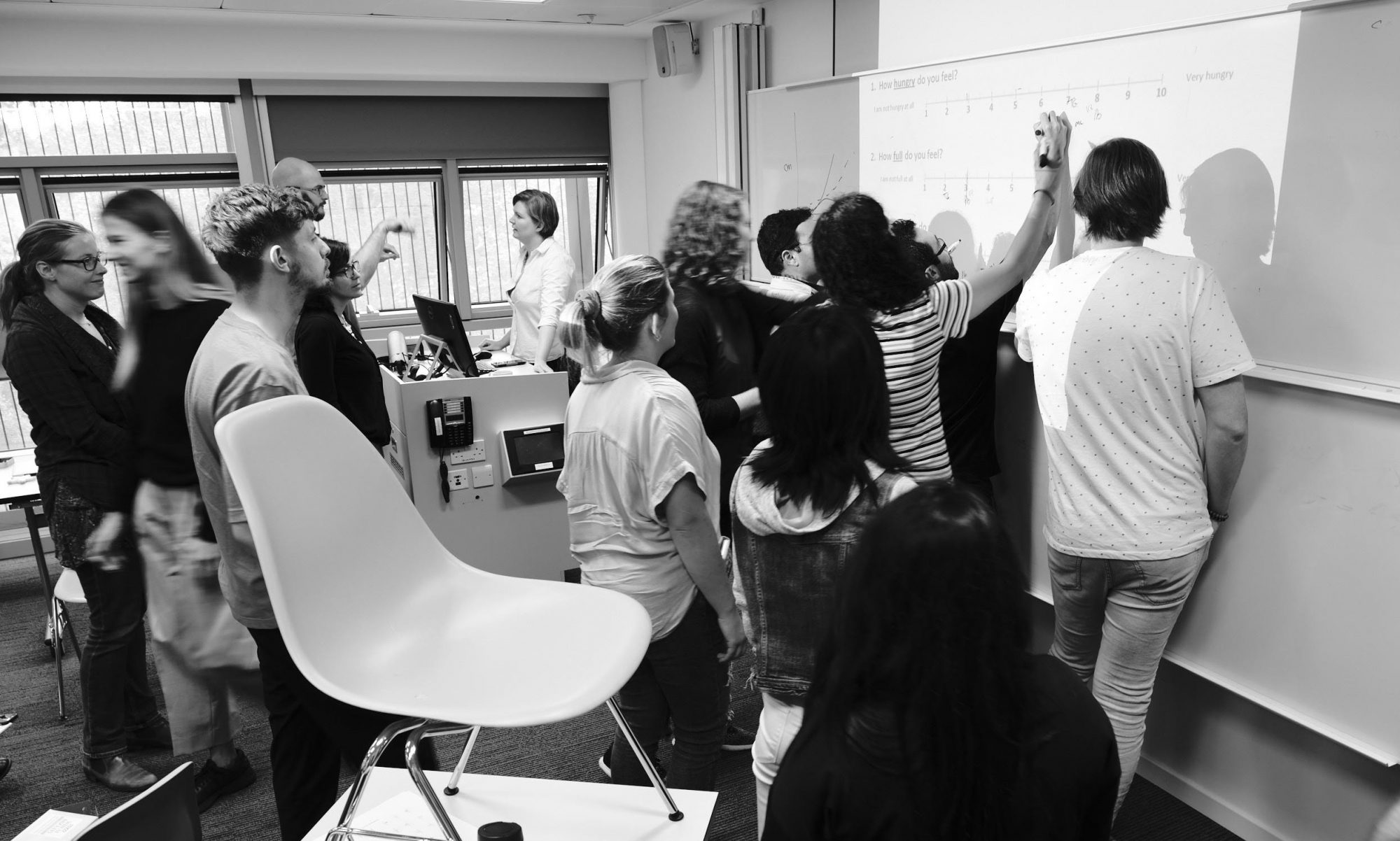Protocol suggestion: add one block of isometrics – suggest it’s your final block for this week. Example combinations, below
Welcome to Week 5 prep – this is the last of the move types of push/pulls we’ll be exploring. Thank you again so much for working with us to find out how a strength practice feels, and how to simply schedule it into your day – including working with your team and line manager to explore the art of the possible. After all, what if 35 minutes out of the work day to stay strong lets you work better, sharper – get more done, eh?? We could study that next for 6 weeks, too.
Here’s a wee Ted Talk of the “things that make me go ‘hmm’ ” variety about how there’s no such thing as “finding” time. Strength is not just about the physical…
What are isometrics
The main feature of isometrics is that you create muscular effort without moving a joint. So where a squat is moving the body up (a push) from the ground, and repeating that, a wall sit is taking a position that creates tension in muscles, and holding that position.
Yielding and Overcoming
Isometrics are usually characterized as either “yielding” or “overcoming”
YIELDING is when there is a set amount of load necessary to maintain YOU in a particular position. For example: imagine maintianing yourself in a push up where you hold your body about 6 inches off the ground. You need to control the amount of effort to keep you there: more and you start to go up; less and you touch the deck.
OVERCOMING is where you are pulling or pushing against an object. For example you could push both hands together and generate a lot of muscle tension – and KEEP generating tension till you fatigue – and you won’t be moving. You could squish yourself into a doorway and push against it with your legs or arms -same thing. Your joints stay still; you generate as much muscular tension as you can.
You can see that most of our calisthenic or body weight movements fall into the YIELDING category. There are other variants, but these two concepts are great for us right now.
Any Move as an Isometric: Find the challenge point, and work it
You can also make just about any bodyweight movement into an isometric by finding a challenging place in a movement to hold. For example, holding a push up 6 inches off the ground is more challenging that holding it with arms fully extended – because you get to use the elbow joint to support the movement – rather than working the muscles quite as much.

What about OUR moves? Isometric versions
There are some classic isometric moves and you’ve already practiced a few: the plank and the wall sit. But there are better ones for our blocks – so here are a couple more, including some new ones:
For Week 5 – Some BILATERAL ISOMETRICS: The HORSE STANCE is a great lower body isometric. The TABLE held for time is another awesome BACK of body isometric that gets just about everything. The SUPERMAN is a great BACK body isometric too. The HOLLOW BODY hold is a good front hold that really hits the middle (do not let your lower back get off the ground). Holding the top position of the DIP between chairs – great iso for upper body – the L SIT version where you stick your legs out in front or tuck up in that dip – really powerful – you can also do the LSIT off the ground or the tuck up version rather than stretching out your legs. A yoga V sit – that’s another challenge and a half.
We’ll talk about isolateral isometrics next week.
Examples





The straight leg get up is another isometric hold where here the focus is on the inner thighs – putting your feet apart as much as you can to get as low as you can, and then focusing on pulling your legs together – make sure you have something you can move back towards to ease standing up again.
Isometric Block Combination Examples
For our blocks, find a position in a movement you choose that you can hold with some effort for 15 seconds. Ideally you’d do the same 10 rep test of the movement to find your 5 rep block load. For example to do 10, 15 second wall squats, you may need to raise your butt slightly above having your upper legs parallel to the ground. If you don’t do that test, the heuristic is: keep holding for 15 seconds – and if you need to move a bit do – but try not to. NEXT – as with all blocks, take your recovery time between these holds – as much as you need – but as little as possible.
- The HORSE STANCE is well worth exploring as a Move A; combine that with a(n assisted) Hang or that SHALLOW PUSH UP (stop 6 inches above floor or whatever incline you use)
- The SUPERMAN and HOLLOW BODY – are made for each other.
- The TABLE and the VSIT go well together
- The (assisted) LSIT can go nicely with the STRAIGHT LEG GET UP.
If you have questions,
Please bring questions/observations over to the Strength Questions in TEAMS
